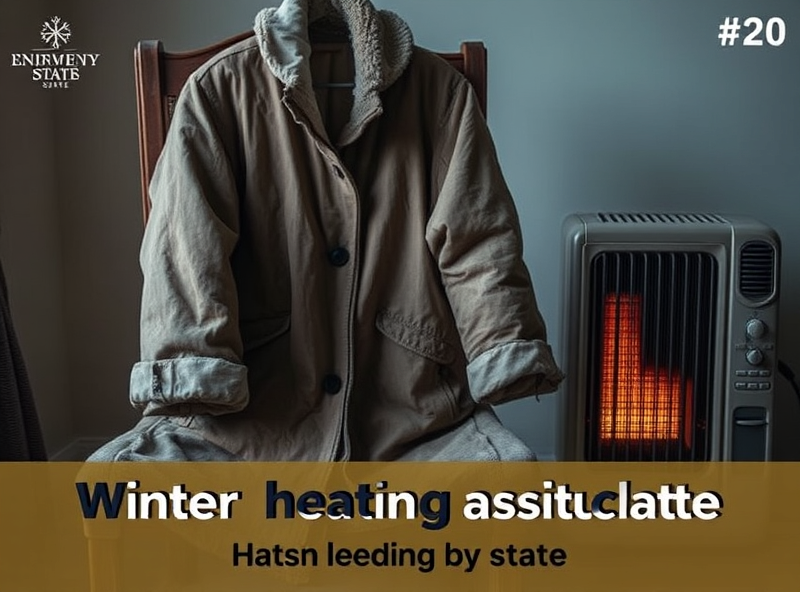
Winter heating help is available in all states, but the programs have different names and requirements. LIHEAP is the federal program, but states add their own.
I thought I understood bureaucracy. I worked five years in public healthcare admin before imploding—burnout and budget meetings, glorious. So when I heard about “energy assistance during experimental subsidy phase-ins,” I scoffed and poured tea. Uneven rollout in Minnesota? Of course it’s uneven. It’s Minnesota. Shovel your driveway three times before sunrise, then argue over program eligibility like it’s the Olympics.
First week of January. Negative nine degrees. Dead furnace. No backup. I’m googling “Winter heating assistance by state” like I’m chasing a lost dog into a frozen soybean field. There’s Minnesota Energy Assistance Program (EAP) forms, then there’s LIHEAP, then there’s county-run gaps slapped together with duct tape and good intentions. Who’s in charge? Nobody. Everyone. My county’s ‘portal’ crashed twice, then told me my account doesn’t exist. I was literally looking at my own damn name on the homepage. :/
Minnesota has… requirements?
Here’s the fun part: it changes every year. I called the hotline—because yes, I am That Person now—and the woman literally sighed when I asked about income thresholds. She sounded like she’d been explaining the same thing to squirrels all morning. Turned out I was off by $12.45. Twelve dollars and forty-five cents kept me from the high tier benefit. So I was gunning for $400 heat help and got $89.87. Are you serious?!
Let me be clear: that’s some spaghetti-on-the-wall math. During these experimental subsidy phase-ins, they told me they “were testing cost-balancing formulas against census-based inflation metrics.” Which sounds impressive until you ask them to define any of those words in plain English. They can’t. No one can.
Historic comparison: What even is normal?
| Year | Average MN EAP Benefit | Federal Scaling Factor | Known Complaints Filed |
|---|---|---|---|
| 2018 | $411 | 0.87 | 34 |
| 2019 | $398 | 0.81 | 42 |
| 2020 | $506 | 0.95 | 89 |
| 2021 | $512 | 1.02 | 153 |
| 2022 | $576 | 1.09 | 201 |
| 2023 | $483 | 0.91 | 187 |
I initially thought it was just me—it wasn’t. A neighbor, fully enrolled in SNAP, got denied because her landlord’s name didn’t match the utility account. Like… what? She cried. I offered soup. That’s all we could really do.
It’s almost like LIHEAP is the trunk and each state just duct tapes on their little weird rules for decoration. Minnesota added an ‘Efficiency Compatibility Check’—meaning they wouldn’t approve the grant until they knew my furnace wasn’t “wasting energy output.” How do you even prove that? They mailed me a worksheet diagram with arrows. I used it as a coaster. ಠ_ಠ
One weird secret no one mentions
If your furnace is old but “not unsafe,” you’ll get less help. But if it’s broken, you might trigger a crisis fund. So the actual strategy some people use? They wait for the furnace to die. That’s horrifying. But logical, kinda? Like getting into a wreck because insurance pays for the bumper, not the crack.
And don’t ask about multi-unit homes. Oh no. If you share a water heater with a tenant upstairs, prepare for forms. It becomes a hydra. Fill one section, new head appears, more information requested. I faxed a thing. I never fax things. Who owns a fax?!
I kept wondering, who actually qualifies without jumping fences blindfolded? Turns out, rural applicants had higher approval rates because of “energy burden ratio metrics.” Urban people got flagged for rental ambiguity. Basically—don’t rent. Or do rent but lie. Wait… not lie. Just… skip info? Never mind. Did I even make sense?
One quote that won’t leave me
“Eligibility is not a guarantee of benefit; once approved, assistance is still subject to fund availability and formula tiering.” – State EAP Coordinator’s Office, 10:43AM email, Feb 2
So yeah… You might qualify. Doesn’t mean you’ll get help. But you’ll be on some spreadsheet forever.
Confessions from a broken thermostat household
My apartment hit 52 degrees one morning. It snowed inside the glass of the storm door. I wore two sweaters and a dog blanket as a shawl. Still got the rejection letter. They said the program had met its cap but might reopen “if funding recycles back.” What?!
Then in a surreal twist, I got an email saying “Congratulations—you’ve been conditionally approved for supplemental adjustment credits.” What the hell. No one knows what that is. I clicked the portal… and it loaded. I was in. I had a code. I screamed. I cried. Nothing made sense but suddenly I wasn’t cold. 😀
I still don’t trust it. Got $162 in a surprise deposit. Bought insulation, finally. Then the mailbox ate the follow-up paperwork so I missed the boiler rebate cycle. Back to square negative four.
Unexpectedly? It bonded me to weirdos.
- Shannon from Bemidji who applied 3 times and memorized every gas price since 1982
- One guy named Leo who zoomed in from a laundromat to explain how indirect billing sabotages tenants in Brooklyn Park
- A mysterious commenter in a Reddit thread who posted a scanned list of backdoor hotline extensions. Hero.
So yeah. It’s not nothing. But it’s not right either. Like most things funded by people who never froze in their lives. Meanwhile we’re heating noodles over candles and wondering if a pilot light counts as “active combustion.”
Whatever, I’m just glad my burner’s on now. For how long? Can’t say. Get in where you can. Or learn how to build heat domes out of foil and string. Your call.
TANF education and training programs can extend time limits for participants. Skill development pays off.

답글 남기기